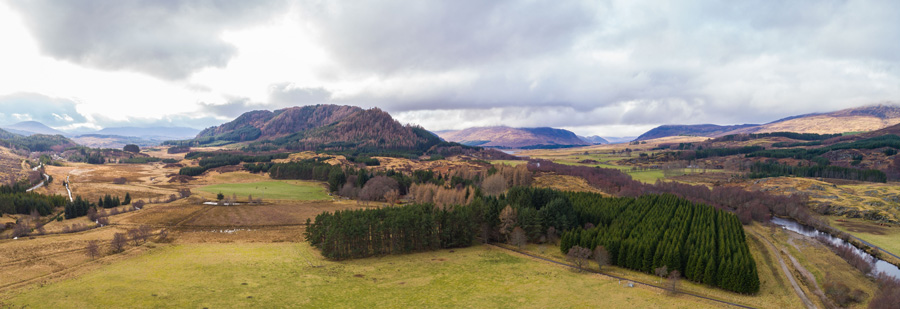2020 rural market trends are significantly shaping the way for 2021 says George Hipwell, Director at Davidson. He predicts very competitive markets for rural sales right across the board – from rural estates and lifestyle homes, to forestry, farms and land once considered less profitable.
The Covid-19 pandemic created a move to long-term working from home and a search for the rural idyl. Combined with a growing desire for a more outdoors life, Davidson & Robertson (D&R) has seen a huge increase in enquiries for rural houses and amenity estates that can provide outdoor space and seclusion.
Employers are set to become more flexible regarding remote office working, enabling buyers to look to their lifestyle, rather than proximity to work. The top characteristics demanded by this new wave of ‘lifestyle home’ buyers who are reassessing their priorities are:
- A home office without compromising on useable space.
- Reliable internet and mobile phone service.
- Outdoor space: a large garden, outbuildings or paddock were top of buyers wish lists.
- Easily accessible walking, running, cycling or equestrian trails.
2021 rural market trends highlight the Estates market is seeing significant interest as buyers who are looking for a rural retreat from the city or want to create a country base, with D&R continuing to see greater demand for smaller amenity and sporting estates. With years of experience in the estates market, Davidson & Robertson Associate Will Dalrymple said “In the past, buyers focused on traditional search criteria that included sporting potential and diverse income streams. These traditional searches are slowly being overtaken by buyers looking to invest in woodland creation and conservation efforts.”
Forestry and planting – it’s unsurprising that in 2021, land continues to be a good investment, with established forestry blocks holding firm and planting land seeing values hit as much as three times the equivalent agricultural use value.
The strength of the planting land and emerging ecosystem services market also provides opportunities for farms to sell less productive land to realise capital for reinvestment in the farm business without needing to reduce the productive capacity of the holding.
Carbon sequestration and ecosystem services is another emerging market attracting new types of buyer, focussing on land for planting and areas low output land that has environmental potential.
The Scottish and UK Government targets for becoming carbon neutral are driving this market – but commercial organisations also recognise the social-corporate benefit of linking their brand with responsible environmental practice.
D&R has seen a significant growth in this sector and is actively involved in transactions and the subsequent process to enable carbon unit trading. Although this market is still in its infancy, it is already clear that this will be a growing section of the market in 2021 and beyond.
Farmland focus: 2020 was a year that saw around 50% less farmland on the open market. Uncertainty over Brexit, trade deals, capital taxation reliefs, and reforms to farm subsidies, certainly helped maintain strong prices, but it also created a lag in farmland coming to the market.
D&R Director George Hipwell is very optimistic about 2021. “We experienced significant growth in the ‘off market’ activity in 2020 for land and agricultural units – a developing market trend which is set to continue and means buyers need to be proactive. Overall, there is a new confidence in the property market for a number of reasons:
Property sales put on hold in 2020 are coming to the market and there is pent up demand from buyers.
Easier access to finance and record low-interest rates mean low-cost borrowing has helped drive agricultural enquiries which held firm last year.
At the same time, produce prices are good – farmgate prices for cattle and sheep have strengthened and since the turn of the year ex-farm wheat prices to May 2021 have exceeded £200/tonne.
Spurred on by growing emphasis on environment, conservation and potential to offset carbon, we are seeing a new swathe of buyers entering the market with keen interest in land that is more marginal – creating a higher sale value for what is traditionally seen as less productive land.”
With so many market opportunities to tap into, it is vitally important that sellers seek advice in good time to fully assess their options and maximise the value of their property. To find out more about the rural market trends for 2021, or for a no-obligation discussion, contact George Hipwell or Will Dalrymple on 0131 449 6212 and Joe Bell

This article was also published by the Scottish Farmer



